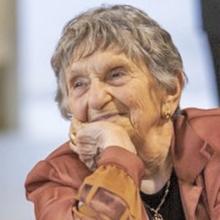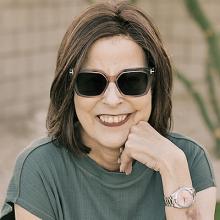Local News
Shalom Square winds up a very successful week…but where was the very first Israel pavilion located in 1970?
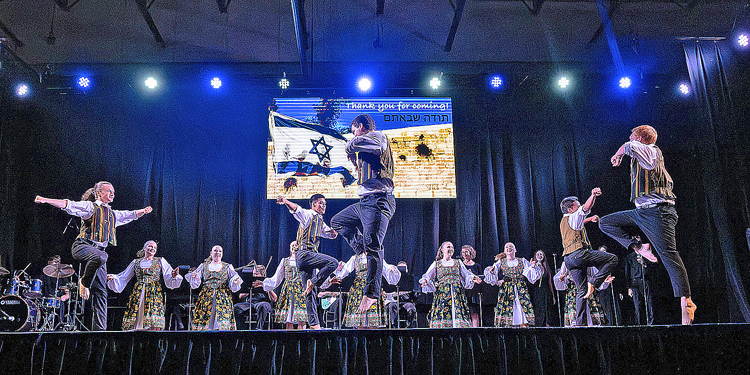
By BERNIE BELLAN It was another very successful run for the Israel pavilion – Shalom Square, during the first week of Folklorama, from Aug 6-13.
This year marked the 51st year in which audiences were able to attend Folklorama in person, with over 7,000 individuals having attended at least one of the 19 shows put on at Shalom Square from August 6-12.
Yet, something that I wrote in our August 2 issue has led me to wonder: Where was the first-ever Israel pavilion actually located – in 1970?
That question might not seem to be of earth-shaking importance, but then again, it’s the kind of question for which, so far, no one I’ve asked has come up with an unequivocal answer.
Still, I would hope the following story might lead to a resolution of somewhat of a mystery: Where was that first-ever Israel pavilion located – in 1970?
The argument was touched off by my writing in the August 2 issue that, prior to the Israel pavilion moving to the Asper Campus in 1997, its home had always been the old YMHA on Hargrave. (I simply assumed that was the case, but I hadn’t really thought to look into it prior to my writing that.)
Sure enough, one of our readers – Roz Greenfeld, sent me an email telling me that the Israel pavilion had been held in what was called “Council House” in the Golden Age Club on Pritchard and Salter (which was also the home for the National Council of Jewish Women, hence the name “Council House.”)
Here is what Roz wrote: “Good morning Bernie. As always glad to see my Jewish Post arrived this morning ! While I was reading about Shalom Square and the connection to the Jewish Post, there is one small error. Shalom Square started at the Golden Age club in 1970! It may have also been called the Council House! It was on Pritchard and Salter – a 2 floor walk up!!
“I know, because I was the representative for Shalom Square in 1971. (Ed. note: Roz would would have been Roz Bernstein back then.) Even back then, the Jewish Post had several articles and pictures about Shalom Square and Folklorama
“They did a great job !!
“Roz”
Roz’s email got me to wondering: She says that the Israel pavilion was located in the Golden Age Club in 1970, and that may well have been the case, but she also says that she didn’t represent Shalom Square until 1971. That does leave open the possibility that the very first Israel pavilion – in 1970, might have been located somewhere else altogether.
I tried to find any reference to some sort of Israel representation – of any sort, during that 1970 festival, by looking through Jewish Posts from 1970 but, unfortunately, wasn’t able to find anything.
So, I turned to two experts whose history with Folklorama goes back quite a long time: Avrom Charach, who’s served as president of Folklorama as well as having been a long-time volunteer at the Israel pavilion – also an ambassador, and who, along with his father, Barney, has been connected to Folklorama for the longest time; and Reeva Nepon, executive director of the Chai Folk Ensemble. (I figured that, since Chai has been a part of every Israel pavilion for as long as I can remember, that there might be some record of where Chai first danced in Folklorama.)
Now, here’s where the controversy really gets heated. While Reeva answered that she couldn’t find any archival material going back earlier than 1972 – and she sent me some picture from that year of Chai dancers, she did say she would try to go through her archives at a later date.
But Avrom Charach really muddied the waters, in response to the question: Where was the very first Israel pavilion? I also told Avrom that the Wikipedia article about Folklorama does not mention an Israel pavilion as being a part of that original 1970 celebration.
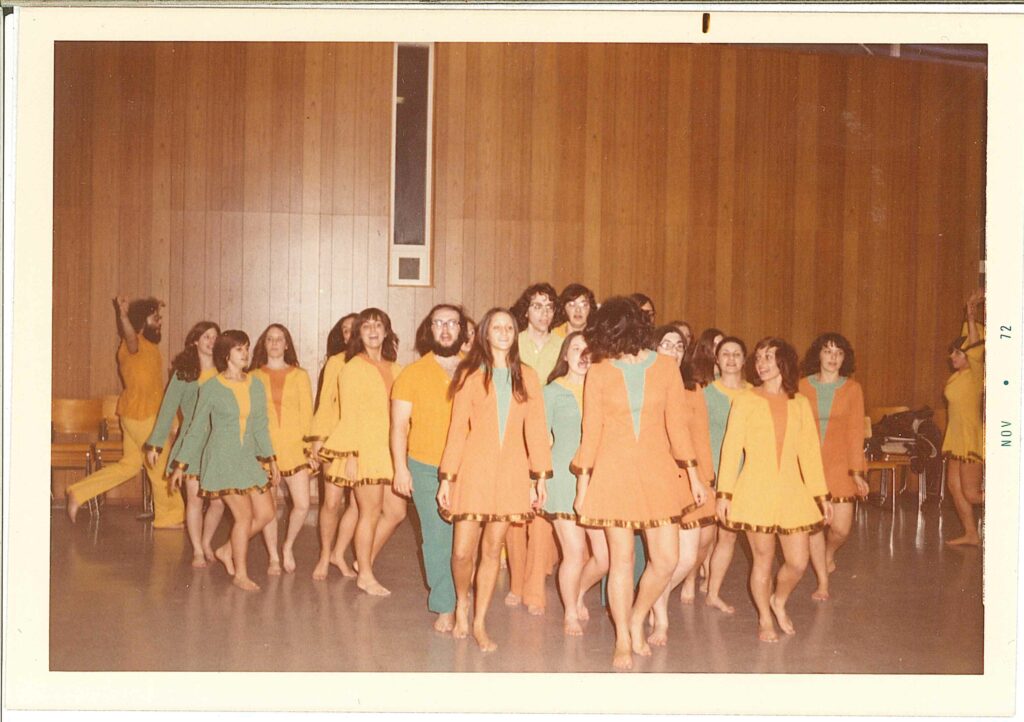
With regard to the question whether there was an Israel pavilion in 1970, Avrom wrote: “Folklorama certified that we were an original founding member in 1970, that Mary Kelekis and I used to speak about this, and that we had Jewish founders of the festival; the founders were all involved in pavilions.”
Avrom added: “I have spoken to some original dancers who said they performed in 1970. It was on the stage in the small gym at Hargrave – I was there but only remember Monte Hall cutting a ribbon to open the pavilion on night 1.”
Now, I had a couple of issues with Avrom’s response. First, why would the very first Israel pavilion have been at the Y – in 1970, only to move to the Golden Age Club (a much smaller venue) in 1971? Second, in an article in The Jewish Post in 1971, it was noted that Chai was to perform only one night during Folklorama in 1971. (The entertainment on the first night of Folklorama in 1971 was provided by none other than Rabbi Zalman Schachter as a raconteur and someone named Ted Nyder as a singer.) Chai performed only on the Monday night of the festival that year. Also, there were different entertainers every night of the festival, with none performing more than one evening. So, the notion that dancers from Chai remembered dancing at the Y in 1970 might also be attributable to foggy memories from whomever it was that Avrom contacted.
Yet, Avrom added this in a later email: “I will concede that as a four-year-old my memory could be of the NCJW building on Pritchard, but I do strongly remember being on my father’s shoulders and looking at a permanent raised stage. If Pritchard had that type of stage the location in my mind could be wrong.”
Thus, the issue where the first Israel pavilion was located remains unresolved. Also, while we’re pretty sure the Israel pavilion moved to the Y for the next 25 years in 1972, we’re not absolutely sure of that. If anyone could shed some light on the questions raised here, you can either email me at jewishp@mymts.net or call me at 204-694-3332.
Post script: Since this article first appeared in the August 16 issue of The Jewish Post & News, and thanks to responses from some readers of the paper, I was able to determine conclusively, not only where the Israel pavilion was held the first year of Folklorama – in 1970, also where it was held every year thereafter.
But, if you’ve read this far you’re going to have to wait until after the August 30 issue of the paper is published for answers. I owe it to readers of the paper to give them first dibs on the resolution of the mystery.
Local News
Cheryl Hirsch Katz, Jewish Child and Family Service’s longest serving staffer, set to retire at end of the month
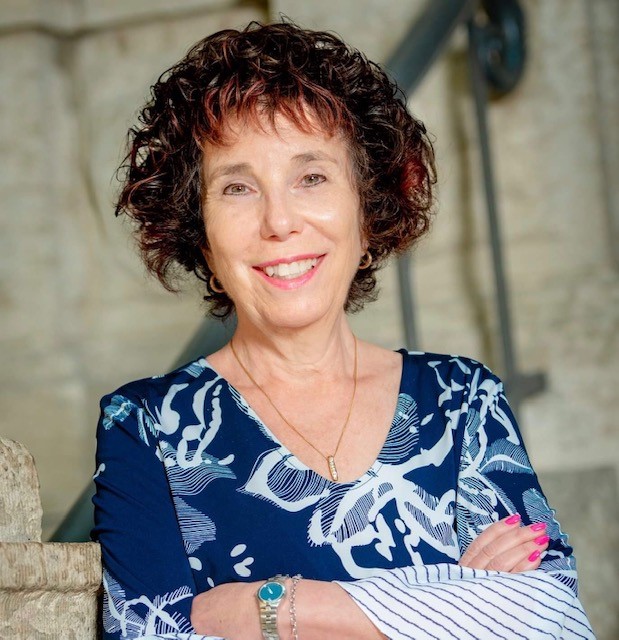
By MYRON LOVE “I loved working at Jewish Child and Family Service,” says Cheryl Hirsh Katz, who is due to retire at the end of June. “I have always appreciated the warm and welcoming atmosphere here. I feel that the people working here are my extended family. I am going to miss my colleagues”.
“I have derived great satisfaction over the years to have been able to help many people in our community of all ages through my work at JCFS,” she continues.
After 44 years at the agency, Katz, the longest-serving member of the staff, was given an appreciative send-off at the JCFS’s recent (June 23) Annual General Meeting at the Shaarey Zedek Synagogue.
The daughter of Art and Bess Hirsh, Cheryl grew up in Garden City. She attended Peretz School, then Jefferson Junior High and Garden City Collegiate. She joined the staff of JCFS in 1981, shortly after receiving her Bachelor of Social Work degree.
She earned an MSW in 1990.
“I chose to become a social worker,” she recalls, “because I always wanted to be able to help people.”
Katz was originally hired by JCFS to work with newcomers. After a couple of years, she was given responsibility for looking after the needs of older adults.
“I really enjoyed working in older adult services,” she says. “That is where I spent the bulk of my time at JCFS.”
After ten years as a case worker, she was promoted to a supervisory role. Later, she was also given responsibility for mental health and addictions programming and settlement services, while keeping the older adult files under her purview.
“As a supervisor, I wasn’t directly involved with individual clients,” she points out. “I was more involved with programming. Among the programs for seniors we organized were – for example – sessions on elder abuse, digital storytelling and memory loss.”
She notes that one of the trends she has seen over the last 44 years is that people are living longer and living in their homes longer. A lot more of our clients are living well into their 90s,” she observes. “We have had to continually expand our staff and the services we provide in order to accommodate the growing demands of an aging population.”
She also spoke of the mental health needs of seniors and aging Holocaust survivors.
She says that she has mixed feelings about leaving JCFS. “After so many years working full time, I am going to have to create a new routine,” she comments.
She notes that, now that she is retired, she will have more time to spend with her parents – who are in their 90s.
And then, there are the two dogs to look after. “I will have time now to try new activities,” she says. “ I might learn to play mah-jong.”
She speaks about maybe doing some traveling – although her husband, Murray, is still working full time.
(She and Murray have one daughter, Farah.)
“Retirement may also include some volunteering,” she adds.
It is quite likely, she will be continuing her association with JCFS but in a volunteer capacity.
Local News
Gray Academy students shine in provincial, national debating competitions
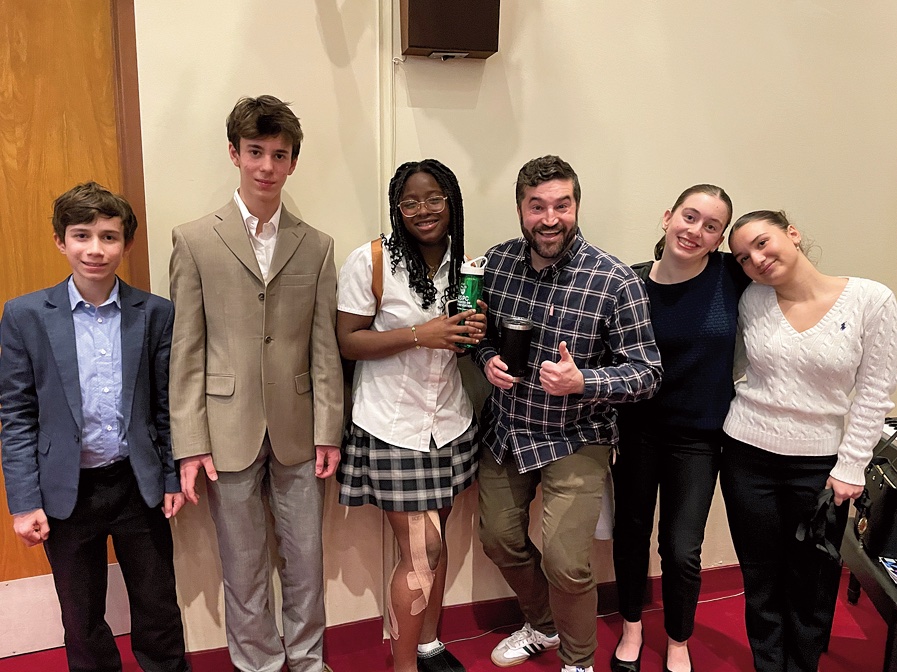
By MYRON LOVE It has been another good year for Gray Academy’s high school students who participated in provincial and national debating competitions. The best results were recorded by Grade 9 student Noa Mednikov, who finished fourth overall nationally, fourth in interpretive reading, and fifth in persuasive speaking at the junior National Public Speaking Championship in early May in Vancouver.
Last October, in the Junior Provincial British Parliamentary Championship – which was held at St. John’s-Ravenscourt – Noa and her partner, Raya Braunstein, finished third as a team while Raya placed third in individual debating.
Their fellow Grade 9 student Maxim Moscalenkov tied for first in persuasive speaking in Vancouver, while the Gray Academy team of Gabe Tapper and Aaron Koplovich finished fifth. Aaron also finished fifth in his individual debate.
Earlier, in March, Maxim finished fifth in the Provincial Juniors debating competition, which was held at Balmoral Hall He and his debate partner, Nate Shenkarow, finished seventh among the teams entered. Last November, he and partner, Ethan Tenenbein, finished seventh in the Junior Prepared Tournament – just behind the Gray Academy team of Nate Shenkarow and Jack Kay.
At the senior high level in that competition, the team of Jacob Tenenbein and Jonah Novoseller finished fourth and Jacob was recognized as fifth best in an individual capacity. Jonah and Jacob also paired up to win the Asper Cup, which was held at their home school.
Jacob represented Manitoba at the Junior National Speech Championship in Vancouver in May and, last October, he and Grade 12 Gray Academy students Julie Krozkin and Daniel Bokser represented Canada at an international debating tournament in Bermuda.
Gray Academy’s debating program was introduced by Linda Martin in 2003. She also led the debating teams at Balmoral Hall. In 2011, Martin was succeeded by Gray Academy high school English teacher Andrew Kaplan.
“Andrew has done a wonderful job with the debating program” says Martin, who has a debating trophy at Gray Academy named in her honour, as well as a provincial trophy for best individual junior debater. “Over the years, Gray Academy students have done very well in many local, national and international competitions,” she adds.
About three weeks ago, this writer had the opportunity to sit down with Andrew Kaplan and six of the school’s top debaters while they discussed the benefits of learning how to debate. According to Noah Strauss – who competed in the Junior Provincials at Balmoral Hall in March, public speaking leaves him with a feeling of accomplishment.
“It’s a good skill set to have,” he observes. “It builds confidence.”
“A benefit of being able to debate is that you learn how to convince people that you know what you are talking about,” adds Maxim Moscolenkov.
Raya Braunstein notes that being able to debate is a skill that she expects to be helpful in many university courses which she may choose to take.
As Andrew Kaplan notes, the ability to express yourself has a great impact in whatever career you choose to pursue.
He points out that debating is compulsory at Gray Academy for all Grade 7 and 8 students – and students can continue debating as an option in the higher grades
Of course, competitive debating is not for everyone. For those students who opt to take that path, the journey begins with internal school debate competition – with the top debating teams and individuals qualifying for local tournaments and – potentially – beyond.
Andrew Kaplan reports that a small number of high schools in Winnipeg and southern Manitoba have active debating programs – including St. Johns Ravenscourt, St. Paul’s High School, St. Mary’s Academy, Garden City and Maples Collegiates in the Seven Oaks School Division, St. Maurice (a Catholic School), as well as Morden Collegiate and Dasmesh, a Sikh private school.
Kaplan expresses his appreciation to the Asper Foundation and an endowment spearheaded by the Kives Family for providing funding for the Gray Academy debating program – as well as the Andrew Slough Foundation – which was established by his friends in memory of the outstanding former Ravenscourt student debater and lawyer who passed away suddenly two years ago at the still young age of 38.
I am confident that our Jewish community can look forward to the continued success of Gray Academy’s star debaters and to the continual emergence of future stars as the times goes by.
Local News
Antisemitism has crept into grade school in Canada
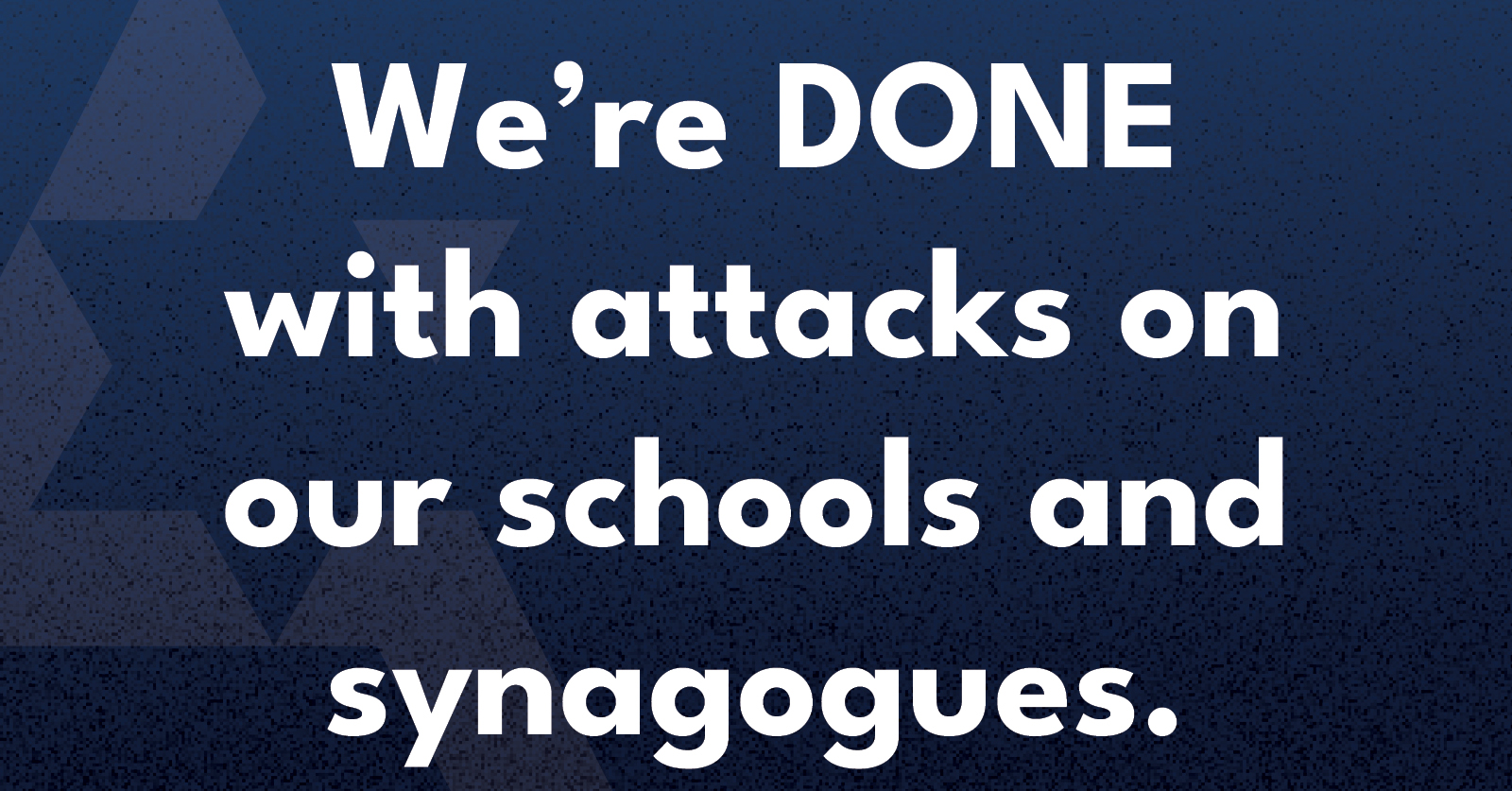
Antisemitism in Canada has moved beyond protests and politics; it is now entering classrooms and altering how Jewish children see themselves functioning within them.
A a university student I have observed the experience of my younger brother in grade eight as a Jewish student. Over the past few months, his school has been at the center of several deeply troubling incidents that have made him feel unsafe in our parks, community, and even his school. Swastikas were drawn around the community, in parks and ponds. Additionally, an older man, who claims to be a pro-Palestinian influencer, stood outside his predominantly Jewish school wearing a keffiyeh, filming a video which then circulated between students on TikTok.
This same man later showed up to our local Jewish community center in keffiyeh to allegedly watch his son play basketball where my brother and many of his classmates go for their lessons, basketball games, and Jewish events. These moments made him and his peers feel watched and targeted just for being Jewish. Local political representatives condemned the incidents and raised awareness about antisemitism, but the fear among students didn’t go away. The feeling of being targeted for simply existing has been taught to my brother, something my parents had tried their hardest to escape from.
Most recently, my brother was chosen to represent his school at a regional science fair. When one of the judges arrived wearing a keffiyeh, he froze. For many, including my brother after the incidents he has faced, the keffiyeh represents a political message. But even more so for my younger brother, it is tied to the fear and intimidation he had already experienced. He felt nervous, distracted, and unsure of how to act.
This is not about silencing political expression. It is about a child who came to share his ideas and left feeling uncertain and afraid. It is about the atmosphere forming in Canadian schools, where Jewish students are being made to feel targeted and unwelcome.
His school made an effort to address the incidents, but the impact is lasting. Posts on social media, much can be very vague at times about inclusion cannot fully undo the feeling of being singled out. A kind word from a teacher does not erase the fear that builds when threats are left unspoken but deeply felt.
I am writing this as a sister who watched her younger brother lose a moment that should have been filled with confidence and pride. He deserved to feel safe. So do all Jewish students in this country.
Moving forward, schools must take concrete steps to protect all students. Antisemitism cannot only be addressed when it becomes violent or overt. It must also be recognized when it appears as intimidation, symbolic targeting, or political messaging that creates fear among students. Children should never have to question whether they are safe in their own classrooms or community spaces.
Events that are meant to support and celebrate students must remain focused on them. Individuals who feel the need to bring political symbols or messages into school grounds or children’s events should not be welcomed in those spaces. Schools must make it clear that their environments exist to support learning, safety, and inclusion, not to host agendas that can intimidate or isolate students.
Administrators and educators must develop clear guidelines for identifying and responding to antisemitic behavior in all its forms. This includes strengthening security measures, offering ongoing staff training, and engaging directly with Jewish families to understand their concerns. Inclusion is not a one-time statement. It is a responsibility that must be reflected in everyday decisions and actions. No child should ever feel unsafe or unwelcome because of their identity.
The author is a Campus Media Fellow with HonestReporting Canada and Allied Voices for Israel who lives in Toronto.

